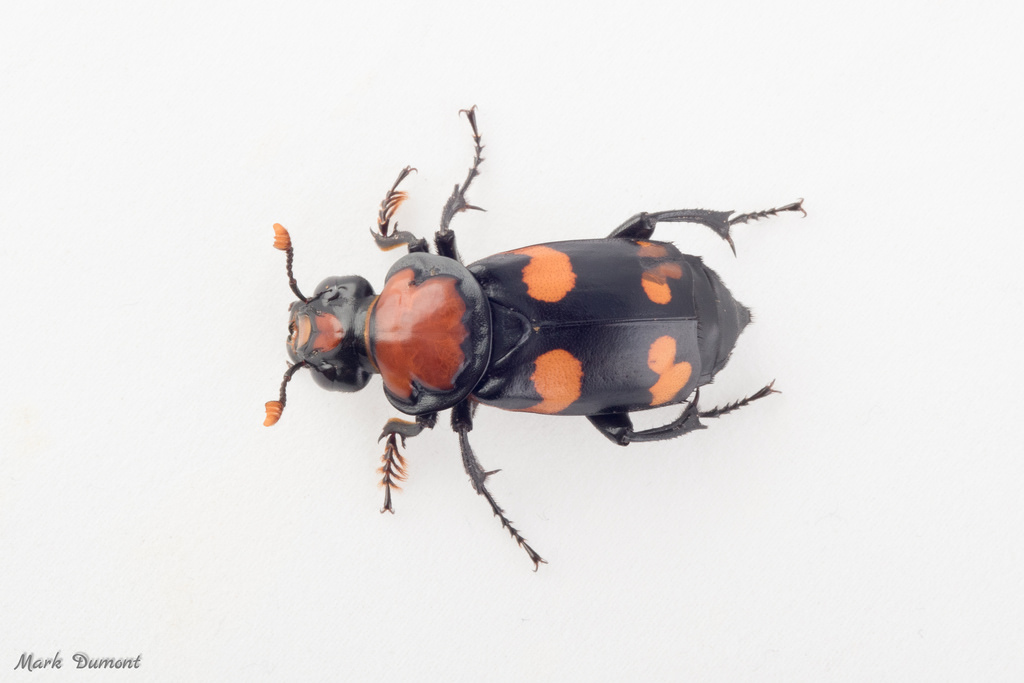The American burying beetle makes a living out of eating the dead. A male and female find and bury a small dead animal, perhaps a rodent carcass. Reproduction occurs during summer months and eggs laid nearby soon hatch into grubs (larvae) which feed on the carrion for about a week. Both the male and female help care for the larvae. Next the larvae pupate and emerge as young adults a couple months later. This beetle is distinctive with its bright orange-red and black body. Orange-red areas can be found on both wings, the area between head and body, and on the tips of each antenna. The American burying beetle can fly over a mile at night.
Learn more about what the Cincinnati Zoo is doing to save American Burying Beetles.

Did You Know?
Losing Beetles: The American burying beetle has been eradicated from 90% of its original range.


